Top 5 Forest Service Cabins in the Gallatin Range
A Wintertime Revel
A gentle sleep comes to an end. I open my eyes to the darkened room and in the stillness I hold my breath and listen. The voices of coyotes meet my ears. Their wails travel through the frozen trees and across the hardened snow. Their song continues, growing louder, stronger, before breaking off to silence.
I shrug deeper into my sleeping bag, suddenly aware that the stove no longer creaks with fire. The one-room cabin will be cold in the hours before sunrise, and with the thought of seeing my breath from the sleeping bag,
I shove myself from the covers and add a log to the fire.
An Intimate Tradition
“Winter cabins are fantastic resources for families, group gatherings, and friends who want to enjoy recreation in the snow,” says freelance writer Alan Kesselheim, an adventurer who has frequented a number of the cabins in the state. Kesselheim and his wife, Marypat, together with their three children, stayed in United States Forest Service (USFS) cabins to celebrate the winter solstice for years as a holiday tradition.
“The cabin adds the element of shared meals, games, drying clothes and reveling in the season without the survival quality of winter tent camping,” Kesselheim says.
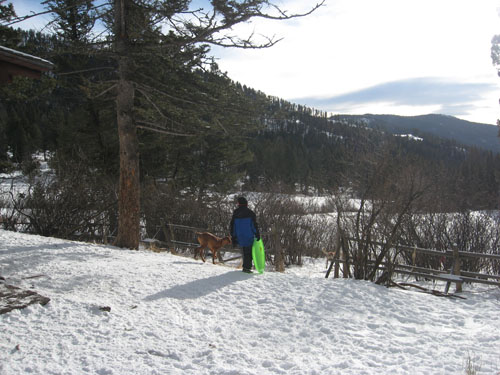
A winter stay in one of Montana’s USFS cabins feels wild. It is an opportunity to experience winter — the snow, the cold, even the wildlife: You might see or hear animals and spot their tracks; trees could split with frost cracks from the cold, sending the explosive sound through the air like a gun shot while all other noise remains muffled in the snow.
It is also an opportunity to live history, as each cabin breathes a story from the past. There are 24 cabins available for rent in the Custer Gallatin National Forest alone, with the majority built in the 1920s or 1930s for use as aid stations or fire lookouts by Forest Rangers on patrol.
Picking a cabin — especially when you haven’t been to the area — can be quite a feat. You just never know until you are there. But I’ve found the uncertainty is part of the whole adventure. Below is a selection of five cabins in the Gallatin Custer National Forest, identified by characteristics important to a wintertime stay.
Battle Ridge Cabin
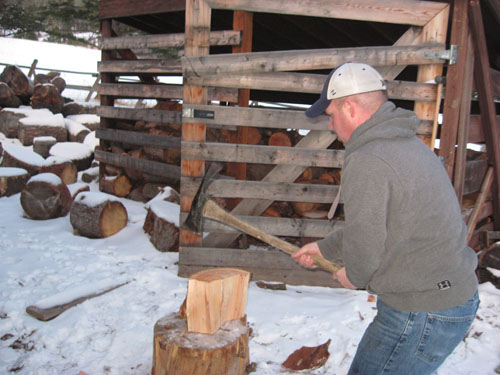
Last year Carrie Shockley and her family started what is becoming a much-anticipated Christmas tradition, centered around the Bozeman district Battle Ridge Cabin. Grandparents, parents, and kids ventured to the cabin for an overnight stay in the Bridgers. The kids made the most of the fresh snow by sledding on a nearby hill and everyone checking out the surrounding forest. And before leaving, with permits in hand, they picked the perfect Christmas trees to take home.
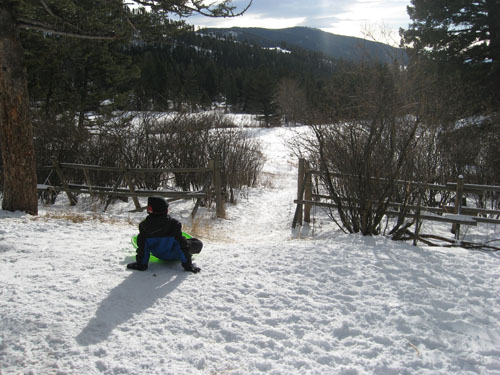
The cabin rests in a meadow, not far from Bridger Bowl, settled below Ross and Sacagawea peaks. It has two sets of bunkbeds and one cot, as well as a wood cook stove. Battle Ridge Cabin is north of Bozeman on Highway 86. Winter parking is allowed at the Battle Ridge Trailhead and visitors may ski, snowshoe, or snowmobile roughly half-a-mile to the cabin.

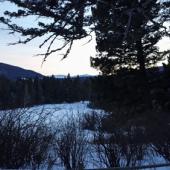
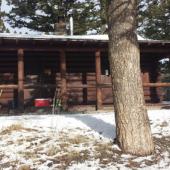
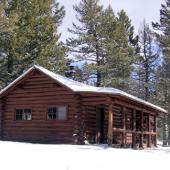
Maxey Cabin
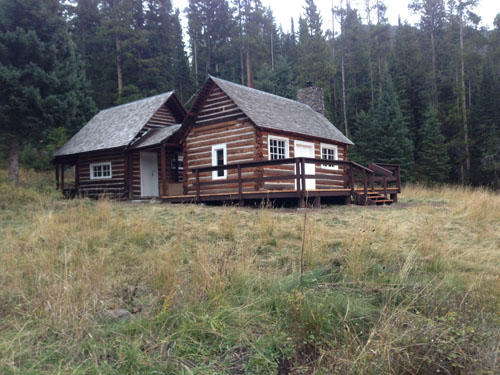
In 1912, the then-owner of the Bozeman Chronicle and Great Falls Tribune, William M. Bole, built a recreational cabin in the Hyalite drainage on land Bole purchased from the Northern Pacific Railroad. The little spot overlooked the headwaters of Hyalite Creek, at a time well before construction of the reservoir. Today, Bole’s cabin is available for rent as a USFS cabin named after his descendant, Emma Bole Maxey.
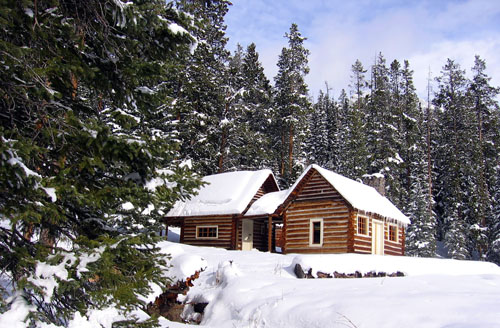
The USFS has rebuilt the stone chimney and restored the roof, windows, and walls in order to ensure the safety of its guests and in 2014, a southern-facing front porch was added in order to return the cabin to its historic character.
Maxey Cabin, which can sleep four, is only one-quarter of a mile from Hyalite Reservoir and there are several skiing trails nearby, groomed by the Friends of Hyalite. Visitors may park at the access road off Hyalite Canyon Road and ski, snowshoe, or hike the short distance to the cabin. Hyalite Canyon Road is plowed through a partnership with Gallatin County, but it may take up to 24 hours.
Big Creek Cabin
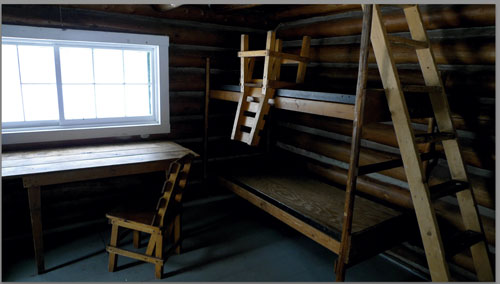
Krisy Hammond has gone with her family on an annual ski-and-cabin stay for several years, typically overnighting in Spanish Creek Cabin. “But there’s been no snow on the road the last two years,” Hammond explains. So last year the family visited Big Creek Cabin in Paradise Valley.
The original Big Creek Cabin was built in 1907 and stands two stories tall next to the 1924 Big Creek Guard Station, which is also available for rent. This newer cabin, at least relative to 1907, has beds to accommodate 11 people, an ancient Monarch cook stove, and a newly installed heat stove. With five rooms and two separate porches, the Big Creek Cabin is the largest in the Yellowstone district.
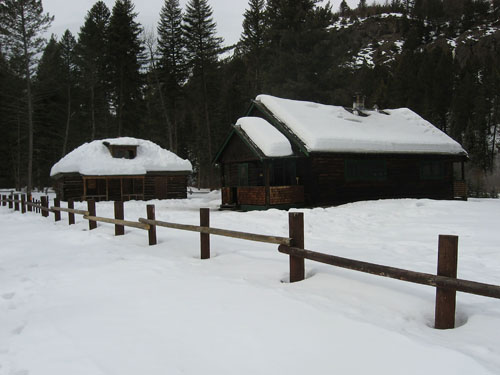
The cabin is south of Livingston off of Highway 89. From Big Creek Road you need only go five miles to the parking area. The last half-mile you may traverse on foot or by ski.
Big Creek sits deep in the canyon at an elevation of only 5,800 feet; however you may continue on the Big Creek Trail 14 miles to reach Windy Pass. All in all, this cabin is a great choice for groups, as its easy access lets you bring everything from the cooler and bed roll, to extra games and gear.
Ibex Cabin
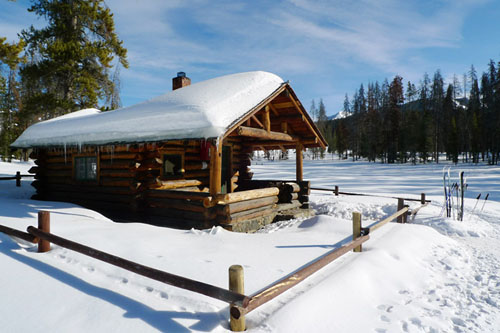
North of Clyde Park, Cottonwood Road and its side roads wind back and forth amidst crop fields. Continue on the road system for about nine miles and you will reach a winter parking area that is 5.5 miles from Ibex Cabin.
The area is surprising. Cropland turns to forest as the road leads deeper into the Crazy Mountain foothills and suddenly the mountains are upon you. Whether you continue to the cabin on ski, snowshoe, or snowmobile, be sure to pause on the rise and look back to the south, where on a clear day you might see all the way into Paradise Valley.
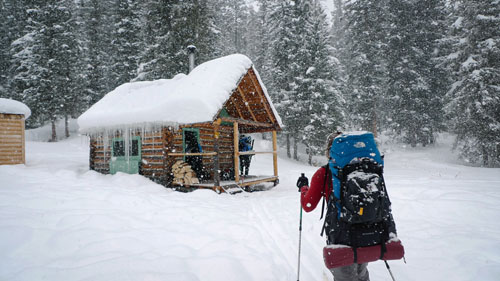
The Ibex Cabin was built in 1939 and is a traditional USFS cabin. It is a one-room structure with a wood stove and little windows and a porch on the front. Bunkbeds will accommodate four.
Rare wildlife abound. A variety of trails range from flat and wide to steep and narrow, for any kind of skier and some snowmobile rides, as well as access to backcountry skiing.
Private land stretches directly south of the cabin, but to the east and north you will find access to Cottonwood Lake Trail, Trespass Creek Trail, Ibex Trail, and Porcupine Lowline Trail.
This area can be windblown and access relies on snow conditions. Watch for drifts or mud.
Garnet Mountain Fire Lookout
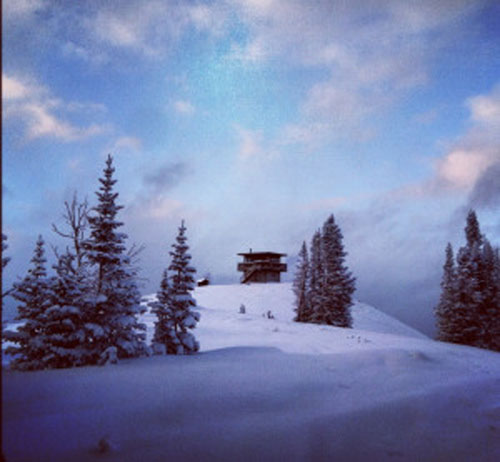
Garnet Mountain Fire Lookout sits at an elevation of 8,245 feet and provides a panoramic view of the Gallatin River Valley to the north, the Little Bear area to the northeast, the eastern Hyalite Ridge, Gallatin Peak and Table Mountain to the west, and the Gallatin Range to the south.
As a fire lookout, Garnet Mountain offers a unique kind of cabin stay. Prepare for winter camping, as the structure has large glass windows and is very exposed. However, the morning sunrise and the commanding views are reward enough for the adventurous sort. On a clear day or under a sky full of stars and the moon, who knows what you might see.
From the Storm Castle winter trailhead you may travel on skis across the non-motorized Trail 85. The route is six miles long, with the last four climbing 2,500 feet. Alternatively, you may snowmobile to the Rat Lake Trailhead and continue on Trail 416 for a total of almost 13 miles before reaching the lookout.
If You Go
A stay in any USFS cabin will be a rustic experience. There usually isn’t cell phone service and you should be prepared for a chilly walk to the outhouse. Be sure to bring your own bedding, flashlight, cookware, dish soap, matches, toilet paper, and first aid kit. You will also need to melt snow or bring your own source of water.
Just like any trip to the mountains, be aware of what could go wrong and then prepare for it. Bring a copy of the combination to unlock the door and bring extra propane for the lantern. If you are staying in a cabin that is farther back, bring emergency items in case you have to spend the night outdoors.
USFS cabins are all rented through an online reservation system and it is not uncommon for the most popular ones to be booked six months in advance. Rest assured, though, if you are willing for the adventure, there may be a hidden treasure that hasn’t yet been reserved this winter.







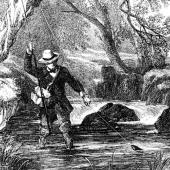




Leave a Comment Here